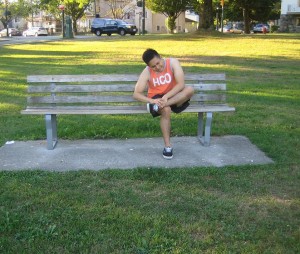An ankle sprain involves tearing of the ankle ligaments. The common ankle sprains typically occur on the lateral part of the ankle. This is a common injury that affects many individuals while engaging in various activities.
What are the symptoms?
An individual with an ankle sprain will experience pain after twisting the ankle. This typically occurs during an inversion injury in which the foot rolls beneath the leg or ankle. There is pain on the exterior of the ankle with a certain degree of swelling and bruising. Depending on the severity of the sprain, an individual may or may not be able to place any weight on the foot.
Risk factors for an ankle sprain
An ankle sprain typically occurs when the ankle is twisted beneath the leg. Activities that can be considered as risk factors include jumping sports and basketball. Some individuals are predisposed to develop ankle sprains. An individual with hindfoot varus has heels that are slightly turned toward the inside.
Individuals who experienced a severe sprain in the past are more likely to end up with a new sprain. In addition, instability as well as those who have weak muscles is predisposed to end up with an ankle sprain.

Treatment options
Most cases of ankle sprains do not require surgery. Even in severe cases, these ligaments can heal without surgery. Take note that the grade of the sprain will determine the suitable treatment. If the individual can bear weight even after the injury, he/she can return to play quickly. Those who cannot walk will require immobilization.
Generally, the treatment during the initial 48-72 hours involves resting the ankle with application of an ice pack at 20 minutes every 2-3 hours along with compression and elevation. Those who could not support weight can be managed by wearing a walking boot until he/she can easily bear weight.
Physical therapy is always part of the treatment. The individual should learn to strengthen the muscles surrounding the ankle, especially the peroneals. In most cases, an ankle sprain can be used until the ankle is strong enough to return to play without it. Take note that surgery is rarely indicated but might be needed if the cartilage is damage or there are other related injuries. The ligaments are only strengthened or repaired in cases of chronic instability in which the ligaments are healed but not strong.
Recovery period
The recovery period will depend on the severity of the injury. For minor injuries, the individual can return to his/her activities after several days. As for severe sprains, it will take longer to heal, usually up to several weeks. When it comes to high ankle sprains, it will take a longer time to fully heal.
The outcome for ankle sprains is generally good. Many individuals can heal from an ankle sprain and able to return to their normal lives and activities. In some cases particularly those who were not able to undergo proper rehabilitation and sustained a severe sprain, the condition will progress to instability of the ankle. Long-lasting instability can occur among those who repeatedly sprain the ankle. Remember that this is dangerous since it can cause damage within the ankle.
